Among representatives of the family Amaryllis clivia takes pride of place. She is distinguished not only by beautiful flowers, but also by ease of care. In a natural habitat, clivia can be found in southern Africa. The blossoming buds resemble lily flowers, due to which the plant received a second name - Kaffir lily.
Evergreen perennial is popular not only because of the bright flowering. Leaves of grassy culture also have decorative value. Long leaves of saturated green color, which are collected in an elegant rosette, decorate the room throughout the year. Clivia, whose beauty can be seen in the photo, is great for growing in an apartment, because at home it does not require complicated care.
Content
Characteristics of clivia and species diversity
A feature of the flower is the absence of a stem. Leaf plates are formed into a dense outlet directly from the root system, which is a cross between the bulb and the rhizome. Density of foliage at the base creates a false stem. The xiphoid leaves of a dark green color can grow up to 75 cm in height, and their width does not exceed 8 cm. The growth of the leafy part is rather slow, but the leaflet has a long life span.
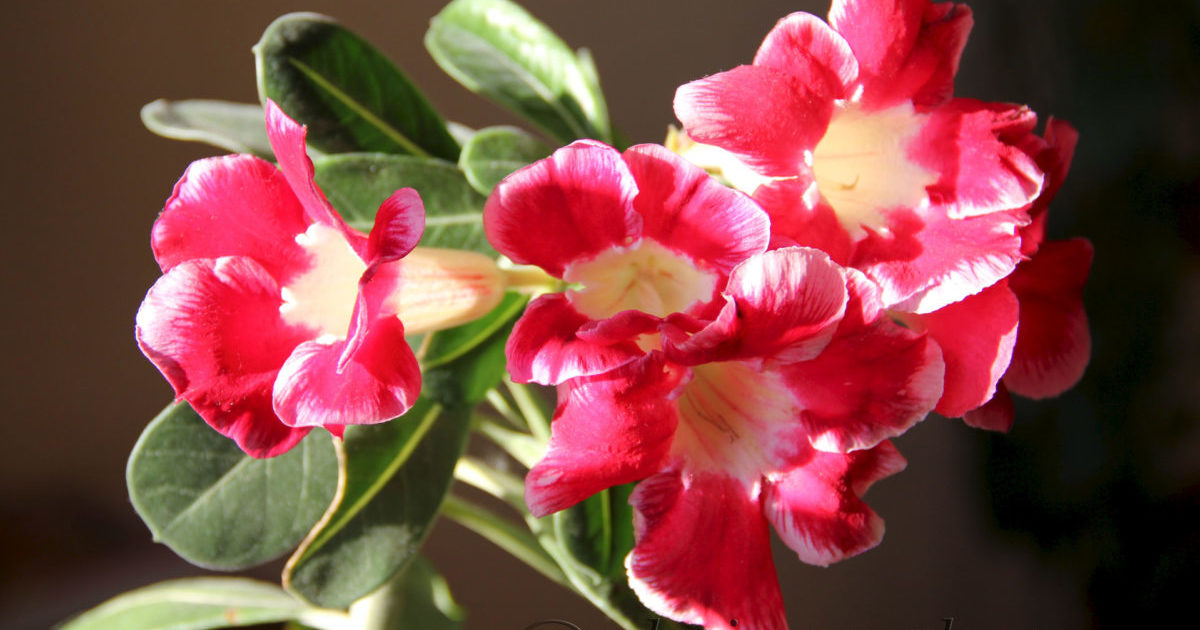 You may be interested in:
You may be interested in:Several ribbed peduncles can grow on one plant at once, the height of which varies within 40 cm. An umbrella inflorescence forms on the peduncle. The number of flowers in one inflorescence does not exceed 30 pieces. Bell-shaped flowers can be painted red, pink or orange.
In indoor floriculture, the following types are popular:
- Clivia Gardena with proper care can reach a half-meter height. Leaf-shaped sword-shaped plates taper at the end. The width of the sheet most often reaches no more than 4 cm. The smooth surface has relief bands that are located in parallel. A high peduncle (up to 50 cm) forms about 16 buds, similar to bells. Lush inflorescences that bloom in winter are painted in red-orange tones;
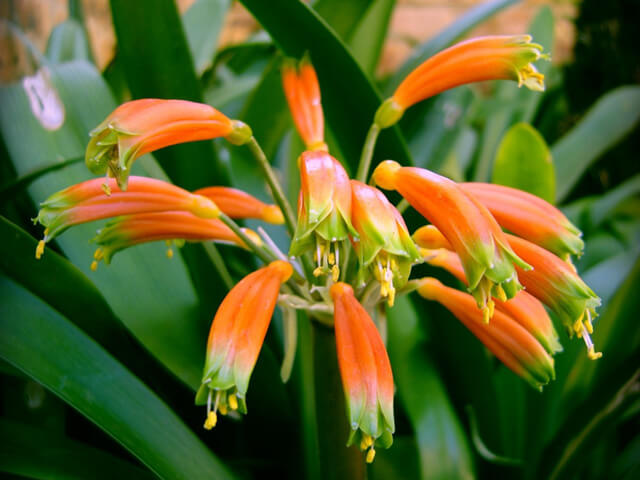
Gardena - the height of cinnabar clivia does not exceed 0.5 m. The xiphoid foliage reaches 60 cm in height and about 6 cm in width. A half-meter peduncle forms 10-20 fairly large buds (about 4 cm in diameter). Flowers have a funnel shape. The color of the petals, depending on the variety, varies from light ocher to red cherry with a yellow or orange tint. The flowering period begins in February and can last until May inclusive. With good care, this species can bloom twice a year;
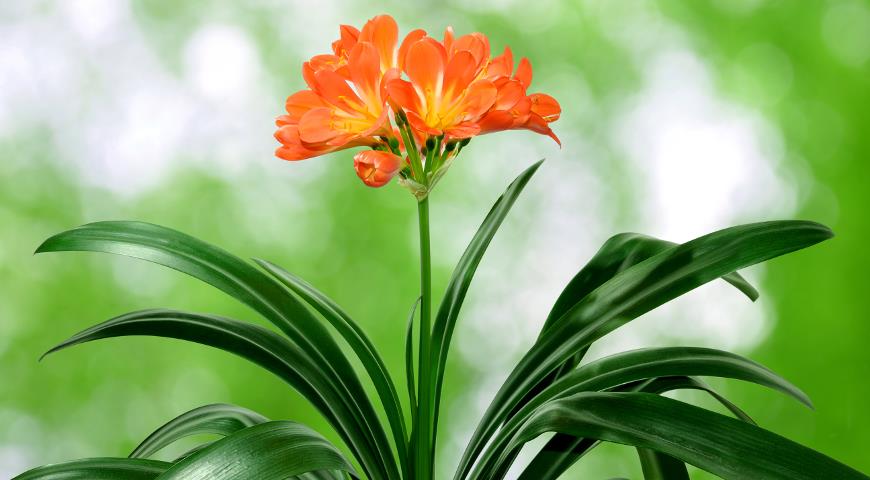
Clivia cinnabar - beautiful clivia is characterized by lower growth, which does not exceed 30 cm. A dense rosette of the xiphoid leaves is painted in dark green. On a fleshy peduncle, up to 60 buds can bloom. The height of the peduncle varies from 30 to 50 cm. The flowers are relatively small in size with a red-orange hue. The top of each petal is colored greenish.
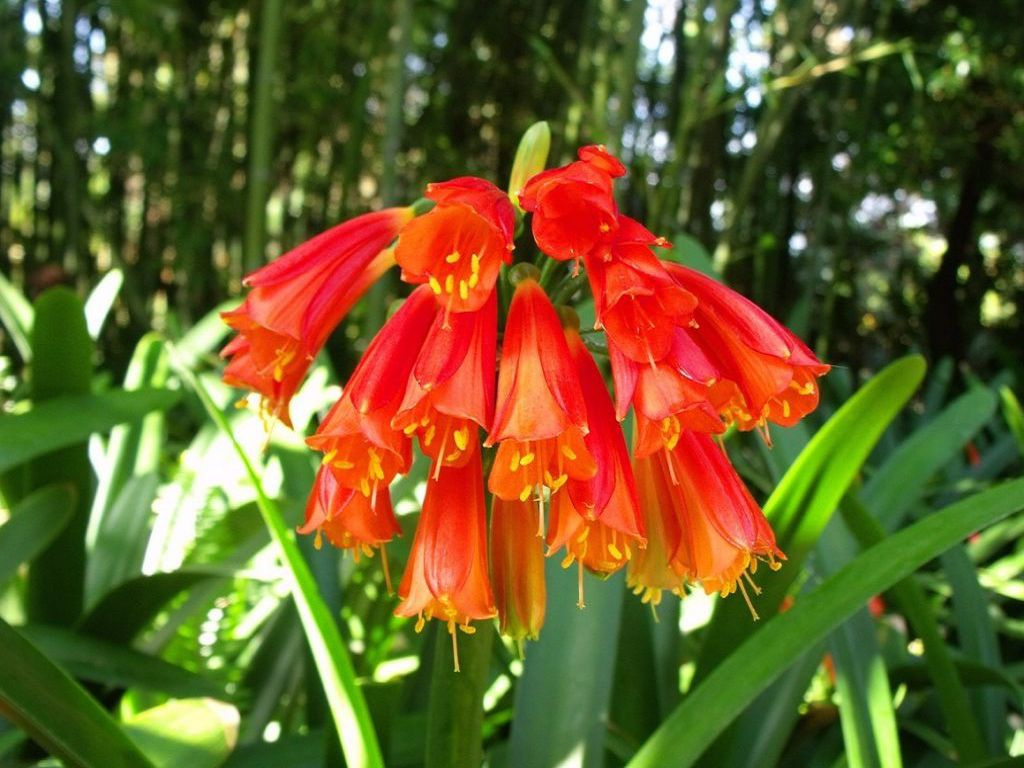
Clivia is beautiful
With proper care, this long-lived flower can delight with its bloom for several decades. Among flower lovers, clivia cinnabar (orange) is most popular.
Secrets and difficulties of caring for clivia at home
Growing clivia is a task that even a beginner will cope with. The unpretentiousness of the flower requires very little from the owner: regular watering, good lighting and lowering the temperature during the rest. To get a bright flowering, you should adhere to some rules for care.
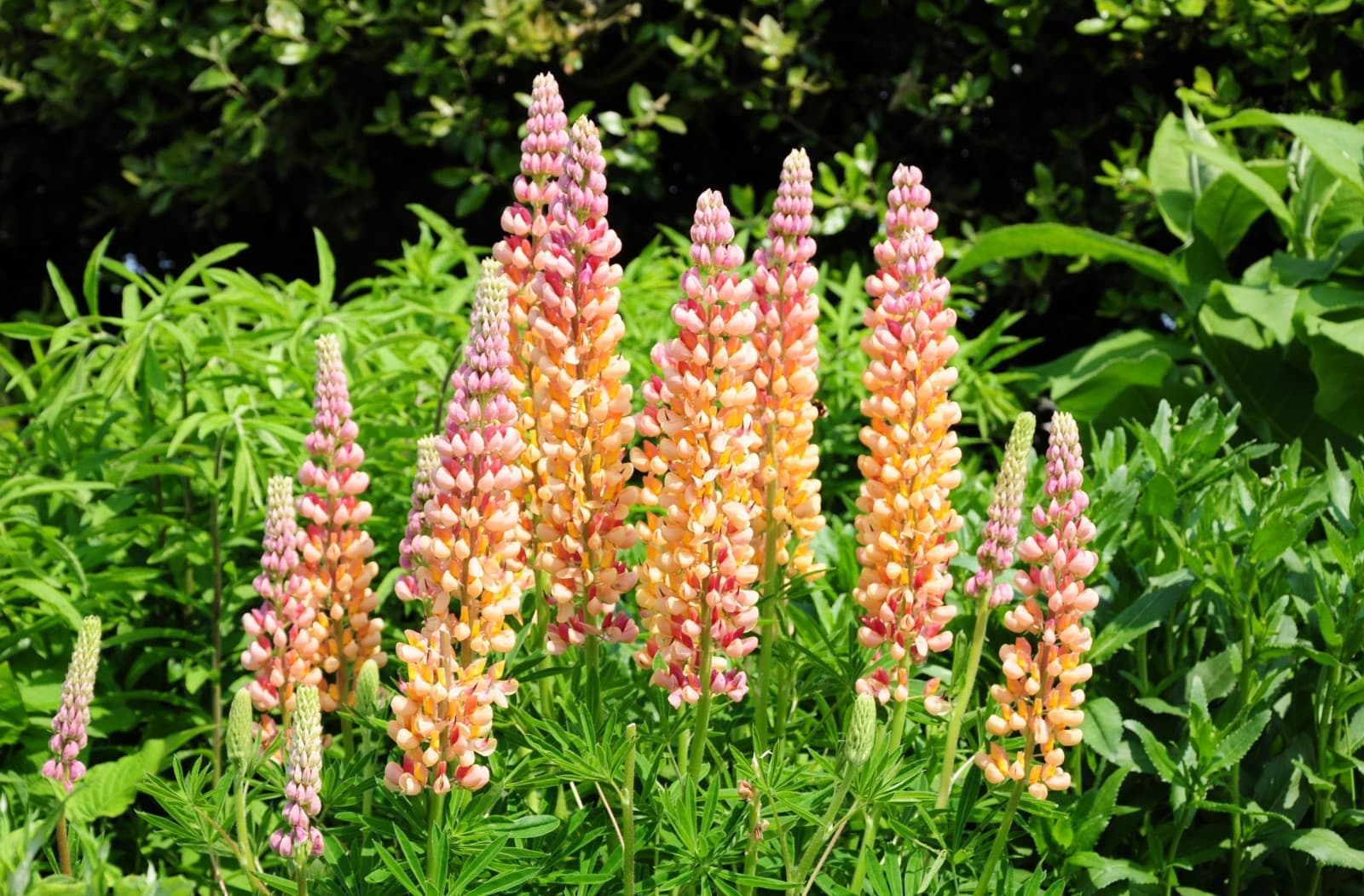 You may be interested in:
You may be interested in:Lighting
It is important for the plant to choose the right location, because the saturation of the color of foliage and the formation of buds depend on this. The room should be with bright diffused light. You can put a flowerpot on the western or eastern windowsill. If this is not possible, then the flower can dwell on the northern windows or in the back of the room on the south side.
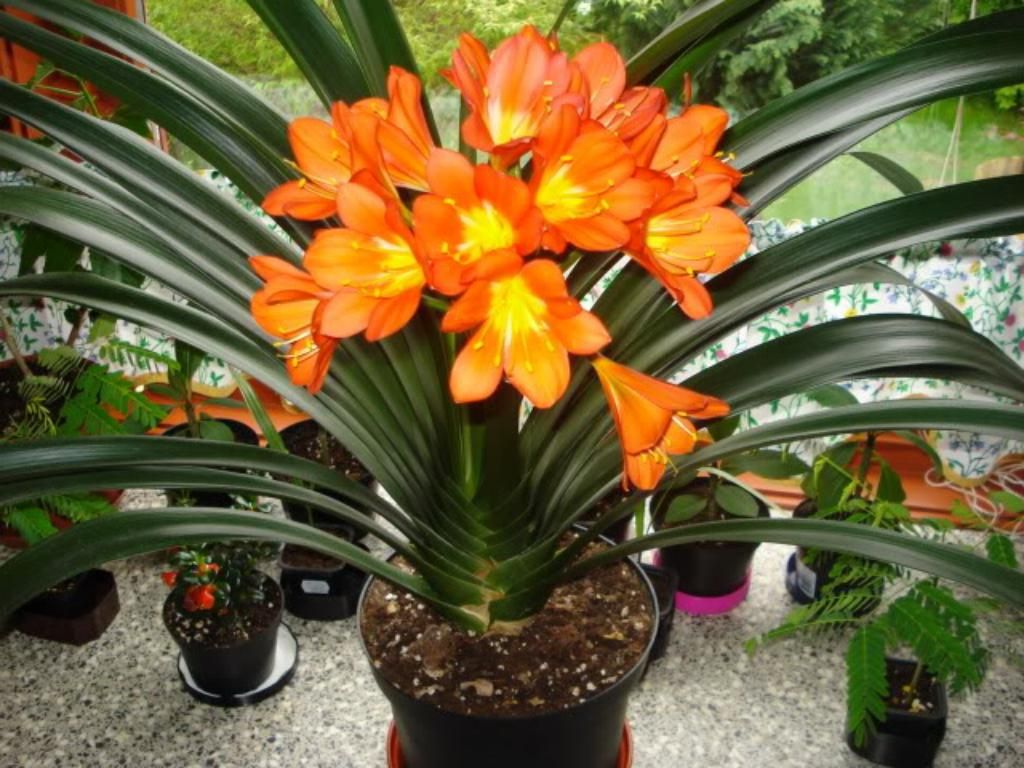
Temperature and humidity
An unpretentious flower grows well at ordinary room temperature in the range of 20-25 ° C. In summer, it is worth ventilating the room more often, avoiding strong drafts. With the onset of autumn, clivia is prepared for the rest period. Stop feeding, reduce watering, and necessarily transfer the flower to a room with a temperature of 12-15 ° C.
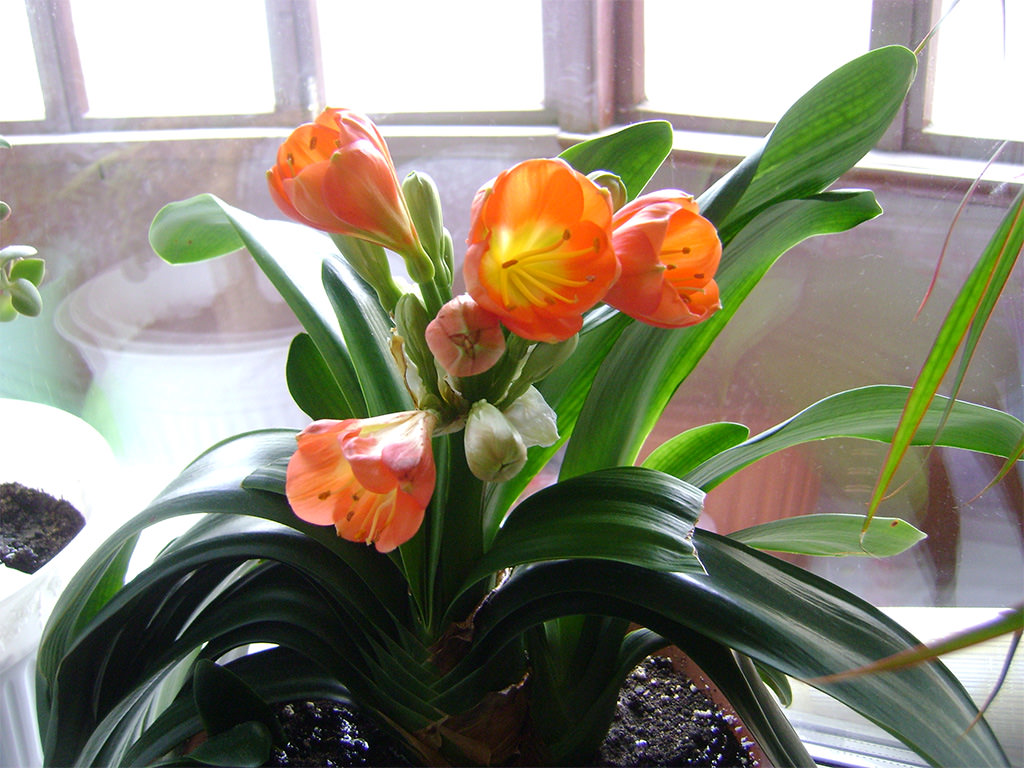
Clivia does not need additional humidification. It adapts perfectly to the conditions of any home, so spraying can be eliminated. In the summer, it is advised to take the flowerpot out onto the balcony, loggia or garden. This helps to strengthen the immunity of the flower and improves its decorative qualities.
Watering and feeding
Water the flower with settled or boiled water at room temperature as the top layer of the soil dries. On hot days, watering should be plentiful and regular. It is impossible to prevent stagnation of the liquid in the pot, otherwise the fleshy rhizome can rot. Lowering the temperature in winter affects the frequency of watering, so the flower should be watered every 10 days.
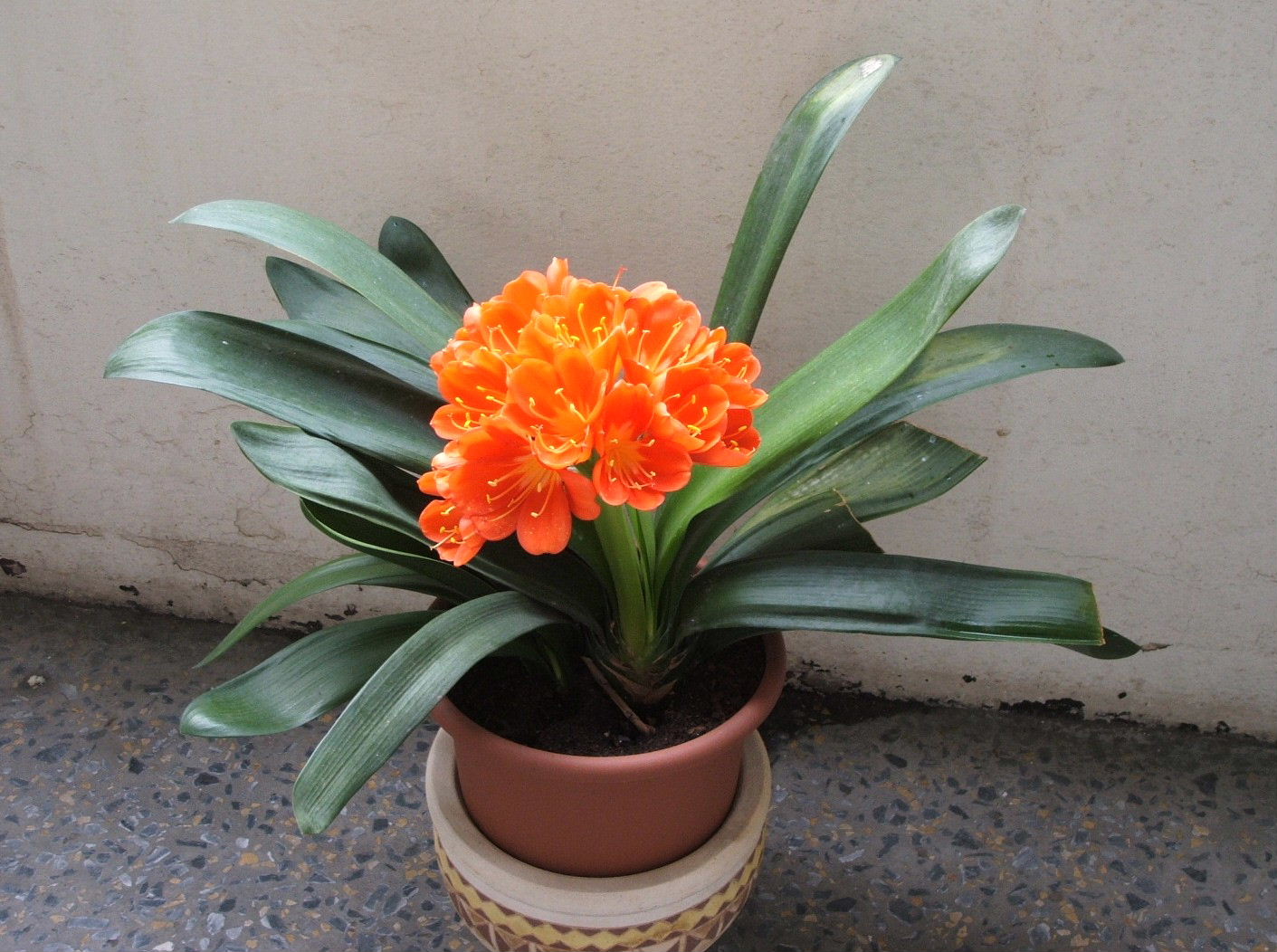
Top dressing is applied only in the spring-summer period. Some gardeners advise feeding a flower in winter, during flowering. At rest, any feeding is excluded, otherwise the plant may die. As fertilizers, you can use complex for flowering crops or alternate the application of mineral and organic fertilizing.
Diseases and Pests
If the conditions of care are violated, the plant may be affected by gray rot and powdery mildew. These fungal diseases appear in moist soil with fluid stagnation and low air temperature. Treatment includes a mandatory transplant with a complete replacement of the soil. The flower and fresh soil are treated with fungicide.
Clivia can also be affected by pests. Most often, the plant is attacked by aphids, scale insects and mealybugs. To get rid of insects, dip a cotton swab in alcohol and use it to remove pests. Then, the aerial part is thoroughly washed with a soap solution and allowed to dry.
The final stage of the fight is the treatment of green mass with a special insecticide. The drug is diluted with water according to the instructions on the package, the leaves are sprayed and added to the water for irrigation. Insecticide, penetrating into the plant, makes the leaves poisonous to pests.
Priming
It is best to grow a flower in loose soil with a slightly acid reaction. When choosing a finished substrate, you should pay attention to the soil mixture for orchids, which is great for growing clivia.
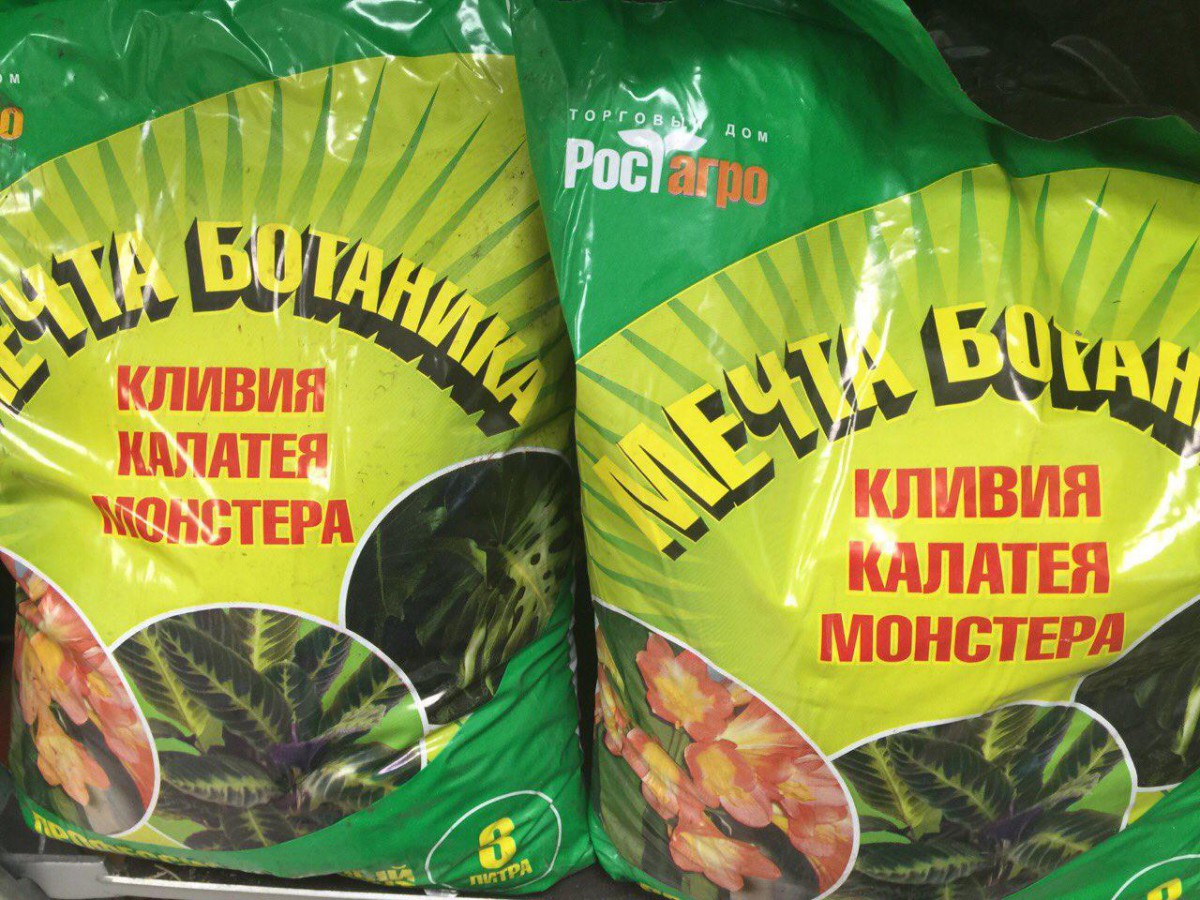
You can independently prepare a nutrient substrate from the following components:
- 1 part of sand;
- 2 parts of sheet land;
- 2 parts of turf land.
The second version of the soil mixture consists of peat, sand, humus and sod land, which is mixed in a ratio of 1: 1: 1: 2. The bottom of the pot is lined with a layer of drainage material, and the pot itself must have drainage holes.
Hygiene
Care for clivia should include regular airing of the room and wet cleaning of the room. She does not need additional hydration, but do not forget about the hygiene of leaves, which are wiped with a damp cloth from dust. Periodically, you can spray the green mass.
Growing and transplanting clivia at home
Clivia is an unpretentious plant, but a transplant for her is a huge stress. Often after the procedure, the plant simply dies. To avoid this, you should carefully read the basic rules of transplantation.
 You may be interested in:
You may be interested in:How to transplant
A plant transplant is carried out only if necessary, because even one damaged root can cause death. The procedure is carried out no more than once every three years after flowering or with the onset of spring. Before starting the transplant, a new pot is selected. Its diameter should be only a few centimeters larger than the previous one, because the flower is comfortable in a tight container.
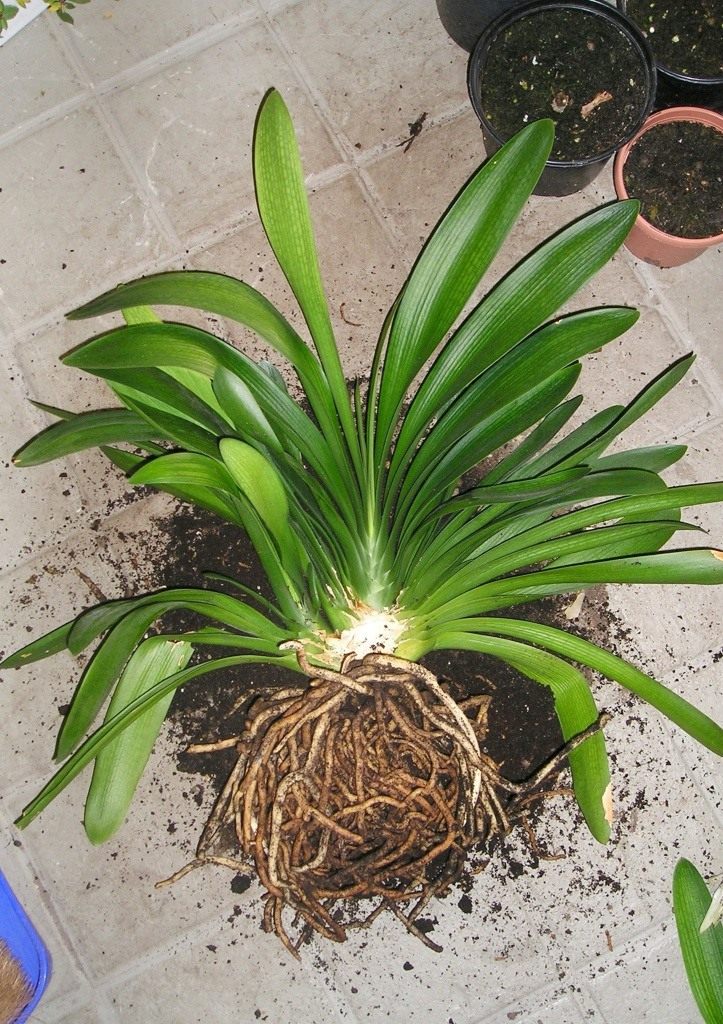
The transplant is as follows:
- 30-40 minutes before the start of the procedure, the soil is well watered to make it easier to extract the plant.
- The pot is tilted to one side, holding the flower by the rosette of leaves, and take out the roots along with an earthen lump.
- The rhizome is carefully inspected, dry and damaged parts are removed. Places of cuts and damage must be sprinkled with activated carbon.
- Drainage is poured into a new pot, a little soil and a flower is placed in the center.
- The resulting voids are filled with fresh soil, and then slightly compacted.
Breeding
Culture propagates in two ways: offspring and seeds. An adult plant that is 5 years old or more, with proper care, forms processes. But do not immediately separate them. This can only be done after the baby has grown at least 4 leaves.
Vegetative propagation is best done during transplantation to reduce the risk of maternal flower death. To separate the lateral shoot, a sharp knife is prepared, which is pre-sterilized. Carefully cut the rhizome, separate the shoot and sprinkle the sections with activated charcoal.
The rooting of a young plant should occur at a temperature of 18 ° C and high humidity. Separated parts are planted in small containers and are not fed for the first month. Seed propagation is less popular, but it is quite possible to grow a plant from seeds at home.
Sand, peat and turf ground are poured into the container in equal parts and mix well.Planting material is laid out on the surface and buried by about half. If the room is too dry, the seed pot is covered with foil and the soil is kept moderately moist.
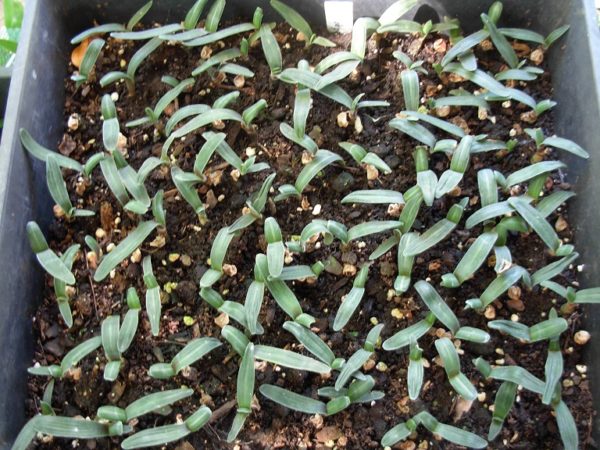
Common Growing Questions
Due to its unpretentiousness, clivia occupies an honorable place in the collections of flower growers. This feature allows you to grow a flower even for beginners. With proper care, lush inflorescences will be an excellent decoration for any interior.

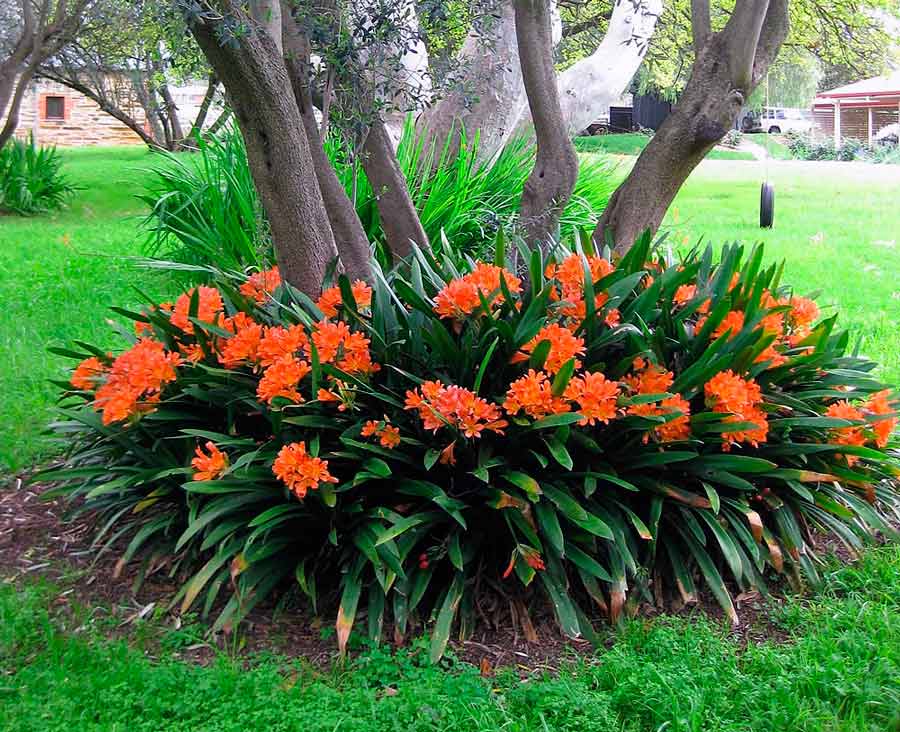
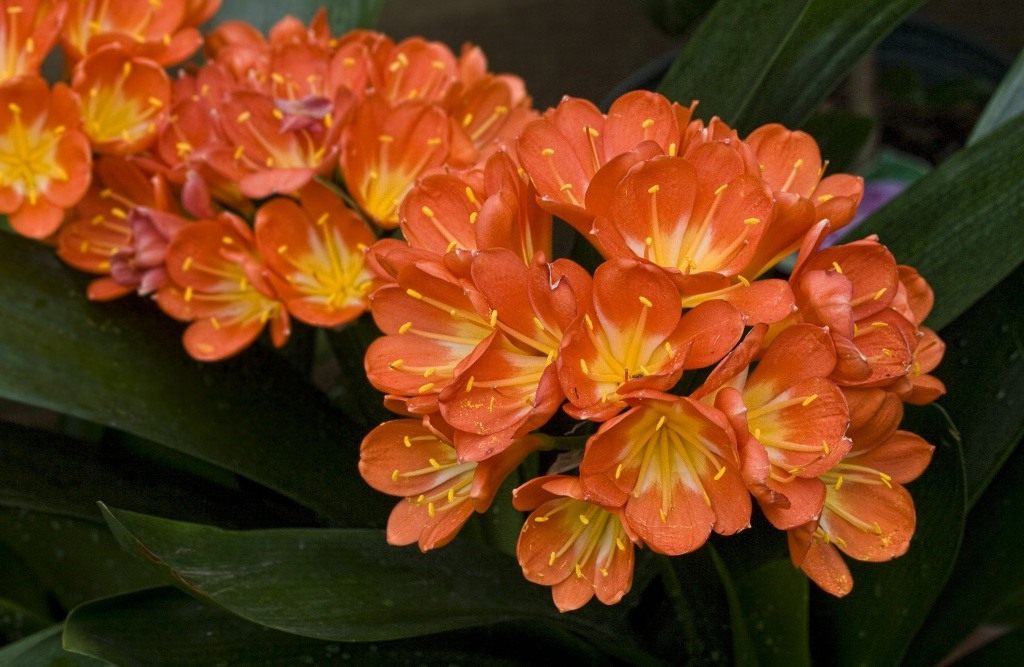
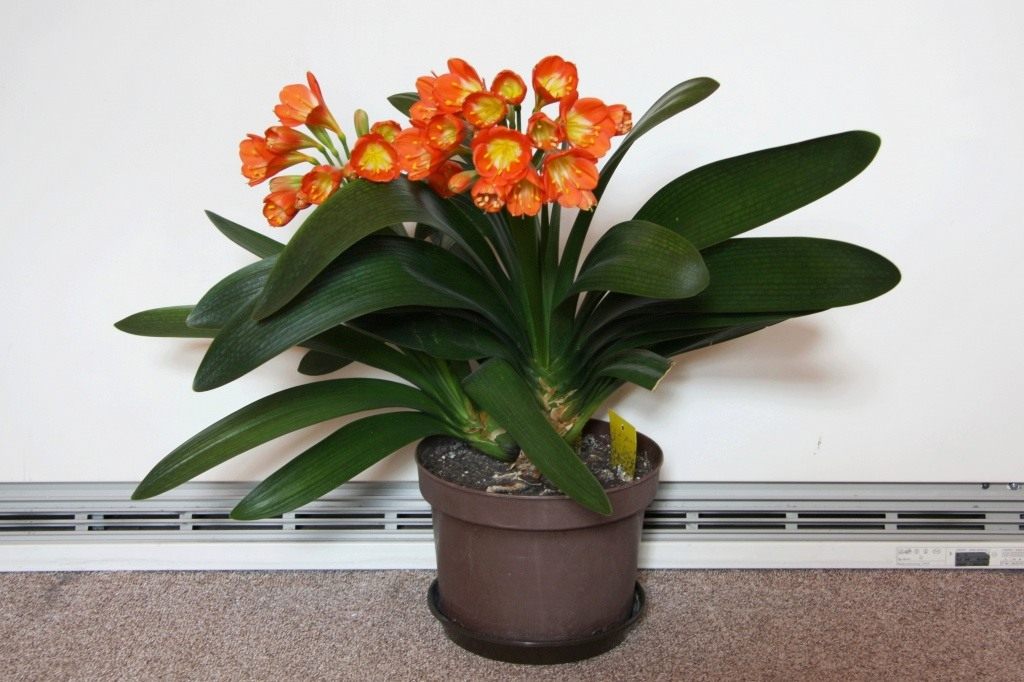



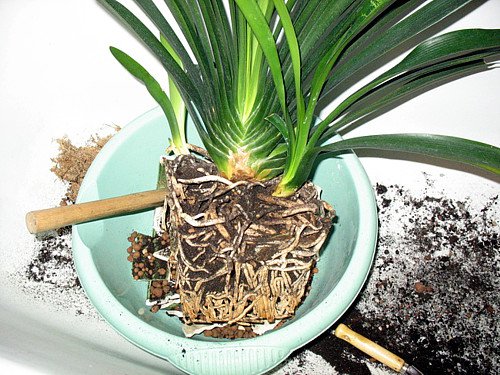
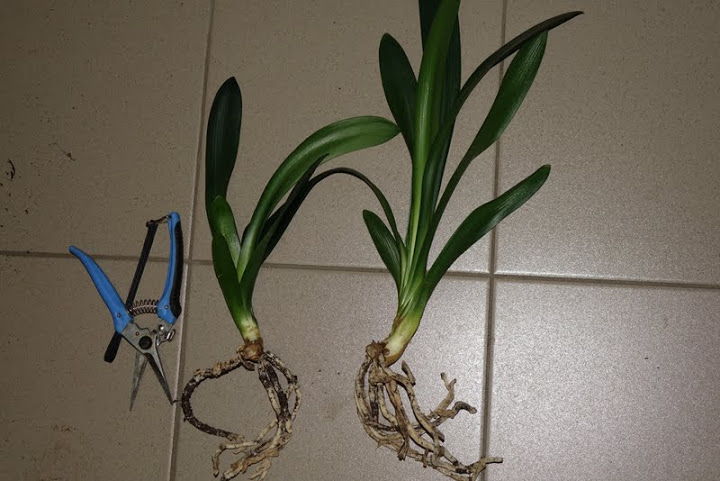
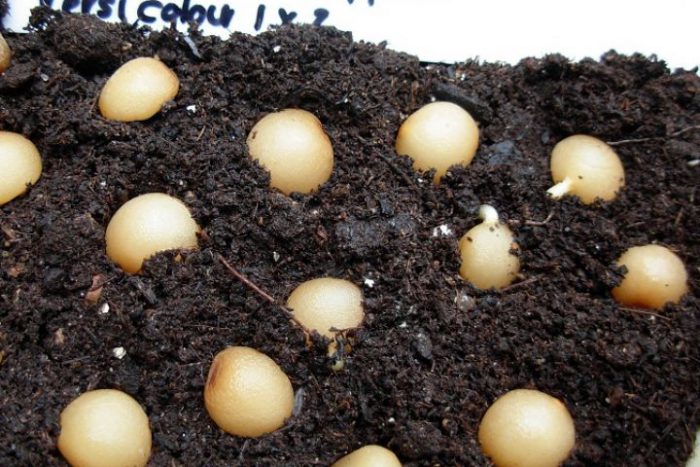
 10 beautiful annuals that bloom all summer
10 beautiful annuals that bloom all summer Sow in the ground, without seedlings: 10 beautiful and unpretentious flowers
Sow in the ground, without seedlings: 10 beautiful and unpretentious flowers Platicodon planting and outdoor care
Platicodon planting and outdoor care Hosta - planting and care in the open ground in the Urals
Hosta - planting and care in the open ground in the Urals